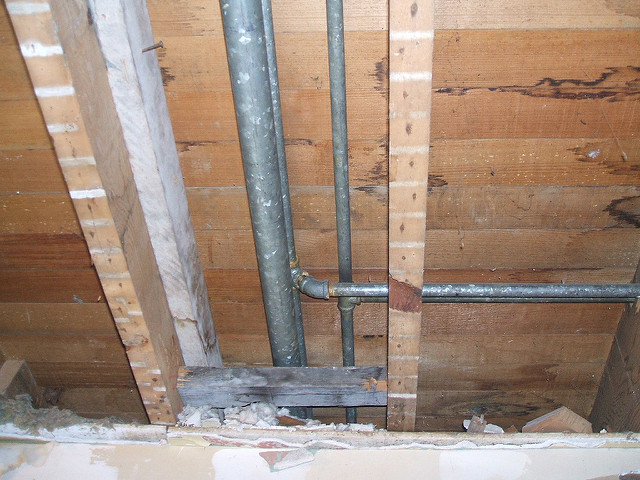Exactly how to Find and also Fixing Water Leaks-- A Comprehensive Guide
Exactly how to Find and also Fixing Water Leaks-- A Comprehensive Guide
Blog Article
We've stumbled upon this post relating to Finding hidden leaks down the page on the internet and concluded it made good sense to write about it with you on this page.

Early detection of leaking water lines can mitigate a possible calamity. Some tiny water leakages may not be visible.
1. Take A Look At the Water Meter
Inspecting it is a surefire way that aids you find leaks. If it moves, that shows a fast-moving leak. This implies you may have a slow-moving leak that could also be underground.
2. Examine Water Intake
Examine your water bills and track your water intake. As the one paying it, you ought to discover if there are any kind of disparities. If you identify sudden changes, despite your intake coinciding, it means that you have leaks in your plumbing system. Remember, your water costs ought to fall under the exact same range every month. An abrupt spike in your bill shows a fast-moving leak.
A steady boost every month, also with the same routines, shows you have a sluggish leakage that's also gradually escalating. Call a plumber to completely examine your residential property, specifically if you feel a warm location on your flooring with piping underneath.
3. Do a Food Coloring Test
When it comes to water usage, 30% originates from commodes. Examination to see if they are running properly. Decrease flecks of food color in the storage tank and also wait 10 minutes. If the color in some way infiltrates your dish throughout that time without flushing, there's a leak between the storage tank and also dish.
4. Asses Exterior Lines
Don't forget to check your outdoor water lines too. Ought to water leak out of the link, you have a loosened rubber gasket. One little leakage can throw away tons of water as well as increase your water bill.
5. Evaluate the circumstance as well as check
Property owners need to make it a practice to inspect under the sink counters and also inside closets for any type of bad odor or mold development. These 2 red flags indicate a leakage so punctual interest is required. Doing regular assessments, even bi-annually, can conserve you from a significant problem.
More notably, if you understand your home is currently old, keep a watchful eye on your heating systems, hose pipes, pipes and so on. Look for discolorations as well as compromising as most devices as well as pipelines have a life expectancy. They will certainly also normally weaken as a result of tear and also wear. Do not wait for it to escalate if you presume dripping water lines in your plumbing system. Call an expert plumber immediately so you don't wind up with a terrible mess in your house.
Early discovery of leaking water lines can mitigate a prospective calamity. Some tiny water leaks may not be noticeable. Examining it is a surefire method that aids you uncover leaks. One small leakage can waste lots of water and also increase your water bill.
If you believe dripping water lines in your plumbing system, do not wait for it to intensify.
WARNING SIGNS OF WATER LEAKAGE BEHIND THE WALL
PERSISTENT MUSTY ODORS
As water slowly drips from a leaky pipe inside the wall, flooring and sheetrock stay damp and develop an odor similar to wet cardboard. It generates a musty smell that can help you find hidden leaks.
MOLD IN UNUSUAL AREAS
Mold usually grows in wet areas like kitchens, baths and laundry rooms. If you spot the stuff on walls or baseboards in other rooms of the house, it’s a good indicator of undetected water leaks.
STAINS THAT GROW
When mold thrives around a leaky pipe, it sometimes takes hold on the inside surface of the affected wall. A growing stain on otherwise clean sheetrock is often your sign of a hidden plumbing problem.
PEELING OR BUBBLING WALLPAPER / PAINT
This clue is easy to miss in rooms that don’t get much use. When you see wallpaper separating along seams or paint bubbling or flaking off the wall, blame sheetrock that stays wet because of an undetected leak.
BUCKLED CEILINGS AND STAINED FLOORS
If ceilings or floors in bathrooms, kitchens or laundry areas develop structural problems, don’t rule out constant damp inside the walls. Wet sheetrock can affect adjacent framing, flooring and ceilings.
https://www.servicemasterbyzaba.com/blog/how-to-detect-water-leakage-in-walls/

I'm very occupied with Hacks to detect leaks and I hope you enjoyed the new blog entry. Do you know about anybody else who is truly interested in the niche? Take a moment to share it. Many thanks for taking the time to read it.
Report this page